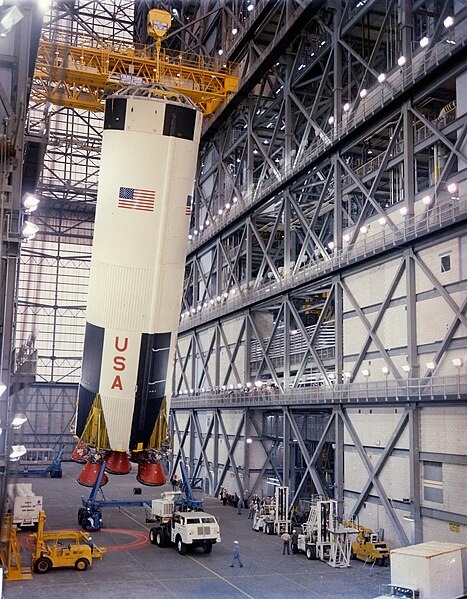The Saturn V (pronounced "Saturn Five") was an American expendable man-rated rocket used by NASA's Apollo and Skylab programs from 1967 until 1973. A multistage liquid-fueled booster, NASA launched 13 Saturn Vs from the Kennedy Space Center, Florida with no loss of crew or payload. It remains the largest and most powerful launch vehicle ever brought to operational status from a height, weight and payload standpoint (the Soviet rockets Energia and the unsuccessful N1 had slightly more takeoff thrust).
The largest production model of the Saturn family of rockets, the Saturn V was designed under the direction of Wernher von Braun and Arthur Rudolph at the Marshall Space Flight Center in Huntsville, Alabama, with Boeing, North American Aviation, Douglas Aircraft Company, and IBM as the lead contractors. Von Braun's design was based in part on his work on the Aggregate series of rockets, especially the A-10, A-11, and A12 in Germany during World War II.








Tidak ada komentar:
Posting Komentar